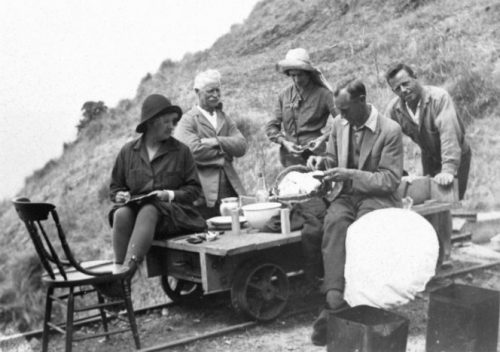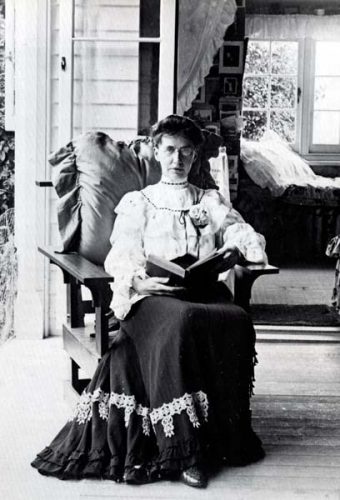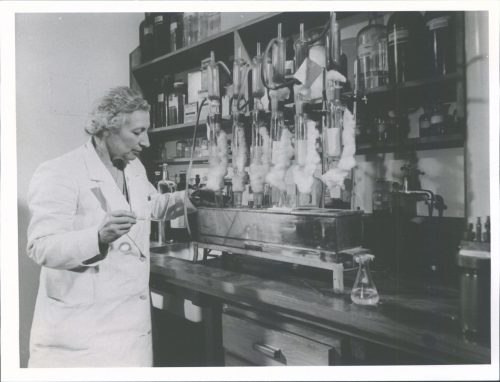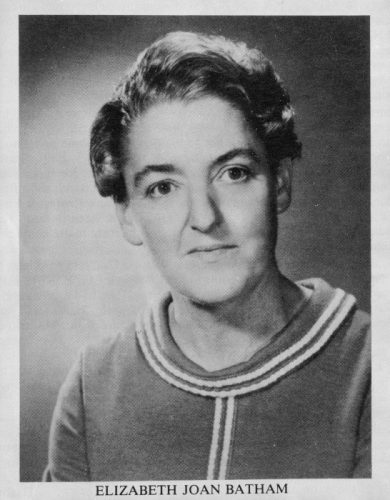It's that time of year again - when we celebrate women in science! Today (Tuesday 10 October 2017 ) is Ada Lovelace Day. Its aim is to celebrate women in science, technology, engineering and maths.
This year I'm featuring pioneers of science in New Zealand. From the nation's very beginnings, these women classified and preserved our unique flora and fauna, made incredible discoveries, and improved the health and wellbeing of future New Zealanders.
Conservation: Pérrine Moncrieff (1893-1979)

Pérrine Moncrieff came from the United Kingdom after World War One to settle in Nelson. With skill in art and an interest in bird life, she devised a pocket guide; New Zealand Birds and How to Identify Them (1925). In the preface she wrote,
"...it is to be regretted that, despite the fact that Man cannot replace them, the appalling destruction of our unique native birds and forest continues to this day."
(from New Zealand Scientists : Pioneer Women: Ellen Blackwell (1864-1952) : Pérrine Moncrieff (1893-1979) : Muriel Bell (1898-1974) : Betty Batham (1917-1974) : Trends in their life and science. 1989: Women Into Science Education. Perrine Moncreiff, p.2.)
Moncrieff wrote articles on bird migration, protection, the endangered South Island Robin, and reaction of animals to the Murchison Earthquake (1929).
In 1932 Pérrine was appointed the first female President of the Royal Australasian Ornithological Union. She lobbied for the conservation of birds, forests and soil against gold mining and milling; successfully establishing the Abel Tasman National Park in 1942.
In 1974 Pérrine was awarded the Order of Oranje-Nassau by the Netherlands. Abel Tasman, who first discovered New Zealand, was from Holland, and the Dutch had sponsored the park. In 1975 she was honoured as Commander of the British Empire, but sadly she wasn't recognised by the scientific community.
Read:
Robin Hodge. Moncrieff, Pérrine, first published in the Dictionary of New Zealand Biography, vol. 4, 1998, and updated online in October, 2001. Te Ara - the Encyclopedia of New Zealand, https://teara.govt.nz/en/biographies/4m57/moncrieff-perrine (accessed 9 October 2017)
Botany: Ellen Blackwell (1864-1952)

Ellen Blackwell lived in New Zealand long enough to collaborate with Robert Laing on the book; Plants of New Zealand. She travelled the country with Robert and her brother Frank, researching and photographing native plants, later writing a large part of the text for their book.
As well as describing the pine, palm and lily families of New Zealand flora, Blackwell's readable style included snippets of local culture and legend:
"The reader was given advice on the preparation of the bracken rhizome for eating, the suitability of matai wood for ballroom floors, how to use nikau palm in the construction of huts and supplejack for ropes and baskets." (Ibid. Ellen Blackwell p.3.)
Plants of New Zealand refuted some previously held ideas on the Lancewood species as well as the nature of mangroves. She identified that their 'shoots' were actually aerial roots.
Ellen's large part in the creation of the book was largely ignored and although some went in to bat for her, she was uncomfortable with publicity and distanced herself from the controversy.
Read:
R. K. Dell. Blackwell, Ellen Wright, first published in the Dictionary of New Zealand Biography, vol. 3, 1996. Te Ara - the Encyclopedia of New Zealand, https://teara.govt.nz/en/biographies/3b37/blackwell-ellen-wright (accessed 9 October 2017)
Nutrition : Muriel Bell (1898-1974)

Muriel Bell, born in Murchison, is known for starting the programme for Free Milk in Schools in 1937.
Muriel studied medicine at Otago University and stayed on to research human metabolism, gaining a doctorate in 1928. She became a lecturer there in 1935. In 1940 she was appointed Director of the Medical Research Council's Nutrition Research Department, and Nutritionist to the Department of Health.
During World War Two, when there were food shortages, Muriel consulted on diet and low cost meals. She found a source of Vitamin D in fish oil, and devised a rosehip syrup to supplement Vitamin C for children.
Muriel also discovered, when implementing the free milk in schools programme, that exposure to the sun destroyed vitamin C and riboflavin (vitamin B2) in milk. Covered trucks were then used to deliver it. She discovered that iodine is linked to healthy thyroid function, and that it isn't present in New Zealand soil. So she introduced iodised salt.
She found a link between fluorine and healthy teeth, campaigning for it to be added to tap water, and researched links between cholesterol and heart disease.
In 1952 Muriel was made a Fellow of the Royal Society of New Zealand, and in 1959 she was made a Commander of the British Empire. She also wrote for the New Zealand Listener on nutrition for many years.
Read:
Philippa Mein Smith. Bell, Muriel Emma, first published in the Dictionary of New Zealand Biography, vol. 4, 1998, and updated online in June, 2012. Te Ara - the Encyclopedia of New Zealand, https://teara.govt.nz/en/biographies/4b21/bell-muriel-emma (accessed 9 October 2017)
Marine Biology: Elizabeth Batham (1917-1974)

Elizabeth Batham was born in Dunedin. Interested in the sea and its biology from childhood, she was an accomplished artist and photographer at school. She studied plankton and sea life in Otago Harbour for a Bachelor of Science in botany and zoology at Otago University.
After gaining a Ph.D on sea anemones at Cambridge in England, Batham took up the first role of Director at the Portobello Marine Biological Station in Otago, turning it into the highly respected research facility it is today; offering international study and courses for school students.
In 1962 Elizabeth was made one of only five female Fellows of The Royal Society of New Zealand. She was so dedicated that she would row to work when the ferry wasn't working, and would dive for so long she often ran out of air.
Politics, administration and a male team of scientists, threatened by a female boss, made it difficult for Batham to manage the growing facility at Portobello. In 1974 she left to study at Victoria University of Wellington.
Betty sadly disappeared while diving in Seatoun.
Read:
John Jillett. Batham, Elizabeth Joan, first published in the Dictionary of New Zealand Biography, vol. 5, 2000. Te Ara - the Encyclopedia of New Zealand, https://teara.govt.nz/en/biographies/5b13/batham-elizabeth-joan (accessed 9 October 2017)
Paleontology: Joan Wiffen (1922-2009)
Joan Wiffen is my hero. In 1975 she found New Zealand's first ever dinosaur bone.
Like many of us, Joan fossicked for shells and ammonites in sea cliffs as a child. After taking geology night classes Joan learned that the geology of north west Hawke's Bay made it possible to find reptile bones, although no one had found any. Yet.
Joan concentrated her searches around the Mangahoua Stream northwest of Napier. Her first major find was a vertebra from a theropod - a carnivorous dinosaur that walked on its hind legs 65 million years ago.
Buried in sandstone rocks in treacherous cold water, were dinosaur fossils from both carnivores and herbivores.
Joan found more theropods, a sauropod (a titanosaur : a huge, herbivorous long necked dinosaur), a hypsilophodont (a small bi-ped), an ankylosaur (like an armadillo), an aquatic, air breathing mosasaur, plesiosaurs (like the loch ness monster) and a flying pterosaur.

Wiffen experimented with new techniques which yielded great results. Her collections are held at GNS Science in Lower Hutt. Some have been lent to the Museum of New Zealand, Te Papa Tongarewa.
Joan Wiffen was awarded a Commander of the British Empire, the Science and Technology Bronze Medal and and Honorary DSc from Massey University in 1994. In 1995 she was honoured with Commander of the Order of the British Empire. In 2004, she was awarded the Morris Skinner Award from the Society of Vertebrate Paleontology.
She continued dinosaur hunting until her death at the age of 87.
Read:
Heritage scientist timeline - Joan Wiffen.
Further reading
- Atoms, Dinosaurs and DNA : 68 Great New Zealand Scientists Veronika Meduna and Rebecca Priestley
- Four Great New Zealand Scientists Keith Tonkin
- Headstrong: 52 women who changed science and the world Rachel Swaby
- Nobel Prize Women in Science Sharon Bertsch McGrayne
- Women in Science ; 50 Fearless Pioneers who Changed the World Rachel Ignotofsky
- She Persisted : 13 American Women who Changed the World Chelsea Clinton
- Superstars of Science : the Brave, the Bold and the Brainy R.G. Grant


Add a comment to: Ada Lovelace Day 2017: Celebrating New Zealand women in science!